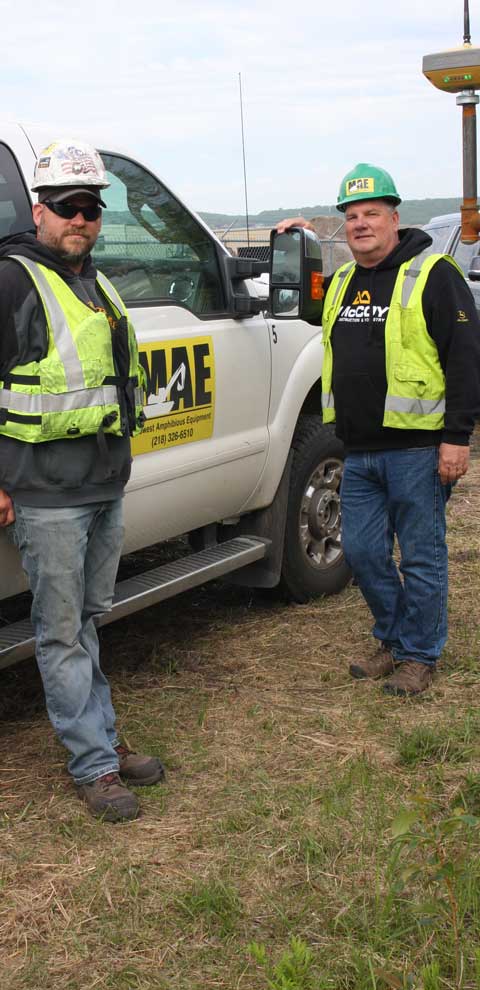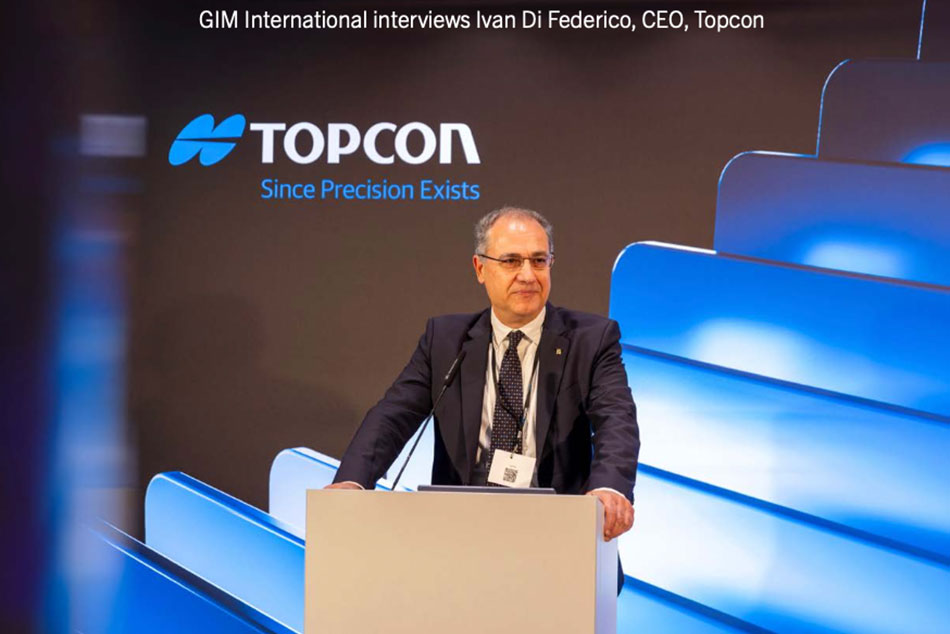Banking on It
Although they bring decades of expertise to the job site, Midwest Amphibious Equipment (MAE), as a company, has only been working the shallows for about five years. According to CEO Steve Gilbertson, their origin stems from an unlikely source.
“Up until about five years ago, I was doing similar work for an equity firm that specializes in wetland mitigation banks around the U.S.,” he said. “That company had landed a project to handle restoration of 23,000 acres in an area known as the Sax-Zim Bog in northern Minnesota. After years of work to get the project permitted, it was finally approved, at which point the head of operations and I looked at each other and began considering the best way to remediate 36 sq. mi. of bog that we couldn’t walk across. He suggested we look into a company from Louisiana that manufactures amphibious excavators — machines with pontoons that thrive in the swamps so common down there. I did, and quickly learned that they are very expensive, both to purchase and to move.”
According to Gilbertson’s calculations, in the course of that three-year project, they would have racked up about $2.5 million in mobility charges alone. Seeing that as bordering on overkill and knowing that potential swamp and bog work can also be plentiful in north central Minnesota, he opted instead to purchase the machines himself — and MAE was born.
“At the bog, we showed the benefits we can bring to the project, ” he said. “Our big selling point is that we can get into places others can’t. We can literally unload off a truck, go to the middle of nowhere, do what needs to be done and move on to the next job. It’s a nice capability to have and provide. And, as a result of that job, we are now breaking into other markets, including regional utilities, the U.S. Fish and Wildlife Service, and the Minnesota Department of Natural Resources (DNR).”
Digging Up the Past
With the Sax-Zim job under their belts, MAE was primed for additional work and quickly landed it in a DNR-led effort to remediate a section of the St. Louis River on the waterfront in Duluth, Minn. As part of a larger project to restore more than 1,700 acres of the area’s Grassy Point and Kingsbury Bay, MAE, working as a subcontractor to Veit USA, was tasked with removing vast amounts of wood waste which had sat at the bottom of the river for more than a century.
“In the late 1800s, this part of the waterfront was the home to a couple of sawmills and, as was common in those days, cuttings from the mills’ operations ended up in the river — that’s just the way things were done back then,” said Gilbertson. “Unfortunately that debris, coupled with ongoing sediment deposits, has affected fish and wildlife habitat. By removing the wood waste and building a small island in the Grassy point area, the DNR hopes to restore the damaged habitat and help fish and other wildlife thrive.”
To put the scope of the wood removal effort into perspective, MAE’s foreman, Matt Brink, said that, less than halfway into the project, they’d already pulled out more than 100,000 cu. yd. of material from the river bottom. And, if such work conjures up images of soggy, decayed muck, nothing could be further from the truth.
“We are pulling up logs that are in amazingly great shape for being submerged for more than a century,” he said. “In fact, we’ve hit several pockets of material in which sawdust has come out relatively dry and fluffy — not what we’d expected to find at all.”
As mentioned, MAE’s past projects have included wetland mitigation and swamp work in which the machine operator could see where they we were digging. They were also projects in which maintaining accurate river or lake bottom elevations was not that critical. Such was not the case at Grassy Point, said Gilbertson.
“Here, inches really matter, both from a compliancy and a materials standpoint,” he said. “Simply put, we won’t get paid for any material we over dig, but it could cost us dearly if we were to under dig. Given that we can see less than a foot into the murky water, it quickly became obvious we needed a more precise method of measuring our cuts as we removed debris.”
The Deal, McCoy
Based on his past construction experience, Gilbertson suspected that the answer to his “digging blind” dilemma could be found in a GPS solution. Armed only with that general feeling, he contacted the Grand Rapids branch of McCoy Construction and Forestry, the local John Deere dealer to explore his options. According to Lucas Weir, McCoy’s IGS specialist, it was a call that would change the way in which Gilbertson and his team would work moving forward.
“I came into the office and was told they’d gotten a call from a guy who works with excavators in the swamps and they want to put GPS on them,” he said. “And oh, can you do it by next week? So I went out and met with Steve and, after hearing his concerns, I suggested a Topcon HiPer VR with an FC-5000 field controller, as well as a X-53i system on their excavator. Working with our partner dealer, the Bloomington, Minnesota branch of RDO Integrated Controls, we got it all for him in short order.”
“Luke and the team at McCoy have been patient in getting us up to speed and the change for us has been dramatic,” said Gilbertson. “I can’t imagine where GPS could be more helpful than under water. On a traditional land-based operation, you can look at an area and immediately see: ‘Oh that’s high; we left a bunch out there that needs to be taken off.’ But once the water removes that visual element from the equation, it’s a whole new ballgame. In addition, the Topcon system is also set up to measure as-builts as the operator digs. It is the ideal solution for us.”
Gilbertson’s focus on getting it right the first time is driven by the fact that their fee for the Grassy Point project is based on a unit price for the material recovered. If they were to undercut by six inches, for example, over the course of the six-acre job that translates to 4,500 yards — or roughly $100,000 — for which they would not be compensated.
“Conversely, if we dig six inches too deep, we will not be paid for removing that additional material,” he said. “So, there’s the potential for a couple hundred thousand dollars that we could lose by not accurately knowing the surface we are dealing with. Now, however, the Topcon solution lets my guys know exactly where the bucket is in relation to the plan provided by the engineers. There is no guesswork; it is dead-on every time, with tolerances to 1/10 of a foot — far closer than we need it to be.”

















